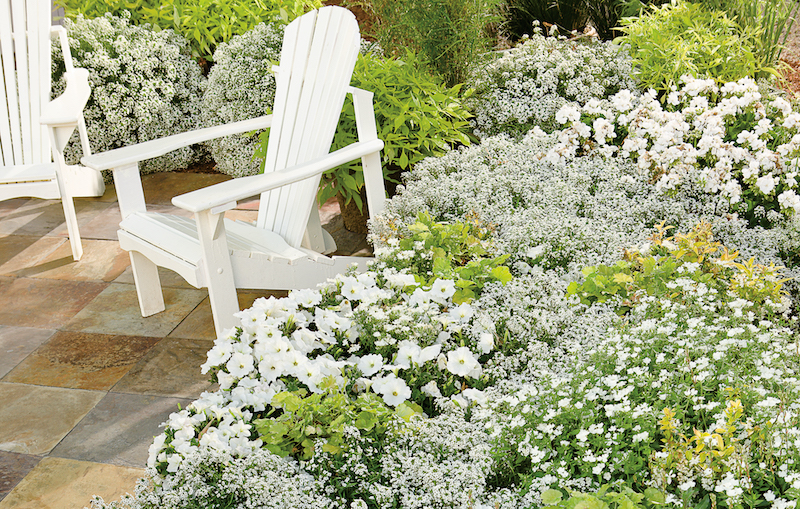Growing Alyssum
Alyssum is a low-growing tender perennial, which blooms non-stop from early spring until the first frost. While Alyssum is a tender perennial in USDA growing zones 9-11, it is grown as a hardy annual in the rest of the country. Alyssum prefers cooler temperatures and is at its best in spring and fall.
Lobularia maritima is the scientific name for Sweet Alyssum. Other plants commonly referred to as alyssums are in the extensive mustard family, which is a different genus. A common pest in grazing meadows is Hoary Alyssum, scientifically named Berteroa incana.
Sweet alyssum is not only used to fill hanging baskets and containers of mixed seasonal plantings, but it is useful in organic farming as a natural weed suppressant, a catch crop that combats pests, and a beneficial insect and pollinator attractant.

Planting Alyssum
Choose a spot for Alyssum that receives at least 4 hours of direct sun. Alyssum also is not choosy about the pH of the soil as long as it is not too acidic or too alkaline. Well-draining soil is essential. Alyssum does not tolerate waterlogged soil at any time of the year. Mulching with organic material around the base of Alyssum will not only slowly feed the soil but also help it retain moisture and stay cooler.
Watering Alyssum
Alyssum needs soil that stays consistently moist but is still free draining. Alyssum requires approximately 1 inch of water a week if no natural rain falls. Regular watering throughout the week is necessary for either garden-grown or container-grown Alyssum. The shallow root system can be encouraged to grow deeper in the soil by watering 2-3 times a week instead of daily watering. Depending on the pot size, container-grown Alyssum may need watering daily during hot spells. Perennial-grown Alyssum will require regular watering throughout the winter when the nighttime temperatures exceed 45 degrees F.
Fertilizing Alyssum
Alyssum is a nonstop bloomer that requires regular applications of fertilizer. Fertilizers formulated for blooming plants are referred to as blooming and rooting mixes. Alyssum growing as an annual can be fertilized up until the first frost, when it will die back. Diluted liquid fertilizer may be easier to use for containers. Granular slow-release fertilizers are easiest to use for garden-grown Alyssum.
Look for a ratio of NPK that is 0-10-5 or 1-4-2. Good brands are Alaska Morbloom liquid feed or Espoma Blooming plant slow-release fertilizer. Apply according to the manufacturer's suggestion.

Pruning Alyssum
Pruning for Alyssum is a simple task. At mid-summer or any other time Alyssum looks shaggy and untidy, the whole plant can be cut back by ½. This type of pruning is called a shearing back. This pruning helps the plant to rest and recover for later rebloom. Hot summer temperatures will also slow down the flowering of Alyssum. After shearing back, make sure to water the plant well and give a light feeding of fertilizer. Don’t worry about deadheading. The flowers continue to form as the flower stem grows longer.
Caring For Alyssum in Pots
Alyssum can adapt to just about any type of container you choose. The compact mounding shape and profuse blooming make it an excellent companion to many other hardy annuals and mixed seasonal plantings. Hanging baskets are another good use for Alyssum. The shallow root system will tolerate the cramped conditions of a basket through the whole growing season.
Regular fertilizing with liquid seaweed or other liquid fertilizers made for blooming plants is a must. Feed containers every 2-3 weeks, and Alyssum will bloom until the first frost.
 |
Author Robbin Small - Published 9-18-2022 |
